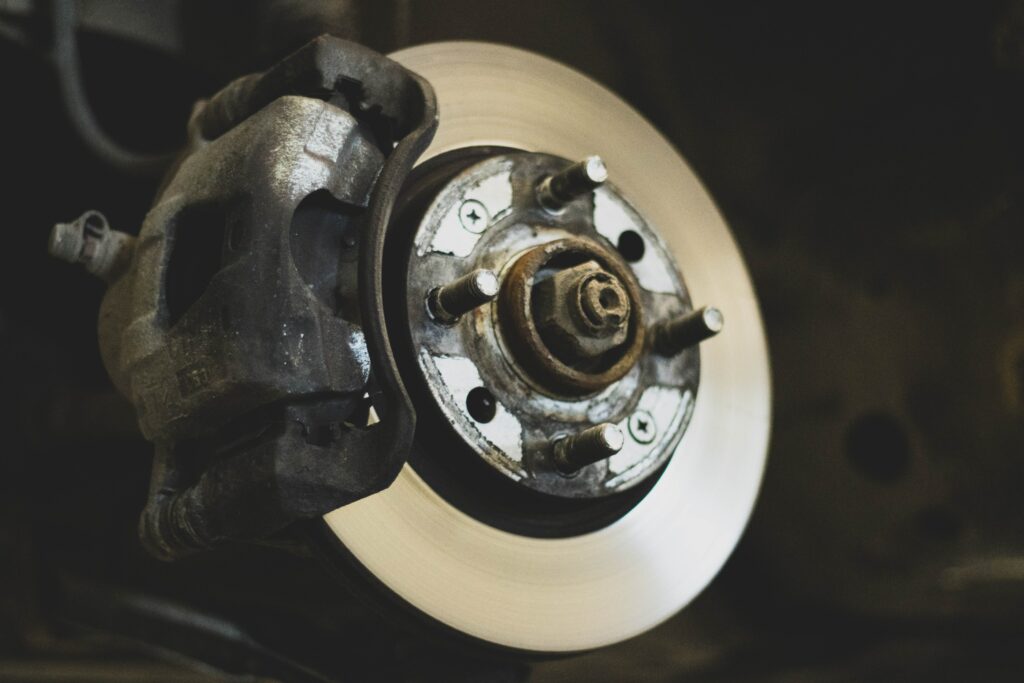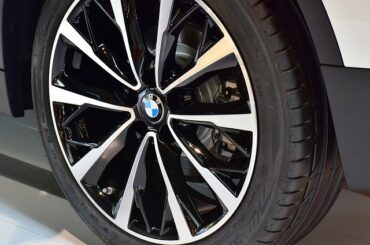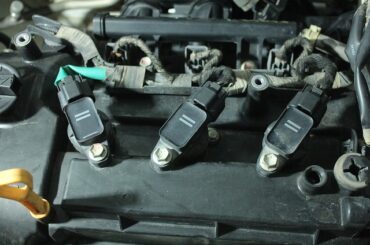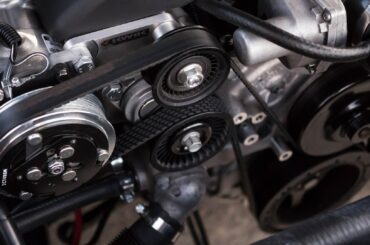In the intricate world of car braking systems, a term often emerges: “lipped discs.” These unassuming components play a pivotal role in ensuring the safety and efficiency of a vehicle’s braking performance. As we delve into the mechanics of lipped discs, we uncover a crucial aspect of brake maintenance that impacts every drive we take. This article will explore the concept of lipped discs, understand their significance within braking systems, and learn how their proper management contributes to a smoother and safer journey.
Contents
What are Lipped Discs
Lipped discs, an integral part of modern car braking systems, warrant attention due to their vital role in ensuring safe and effective braking. These discs, also known as brake rotors, work with brake pads to facilitate the vehicle’s deceleration when the brakes are engaged.
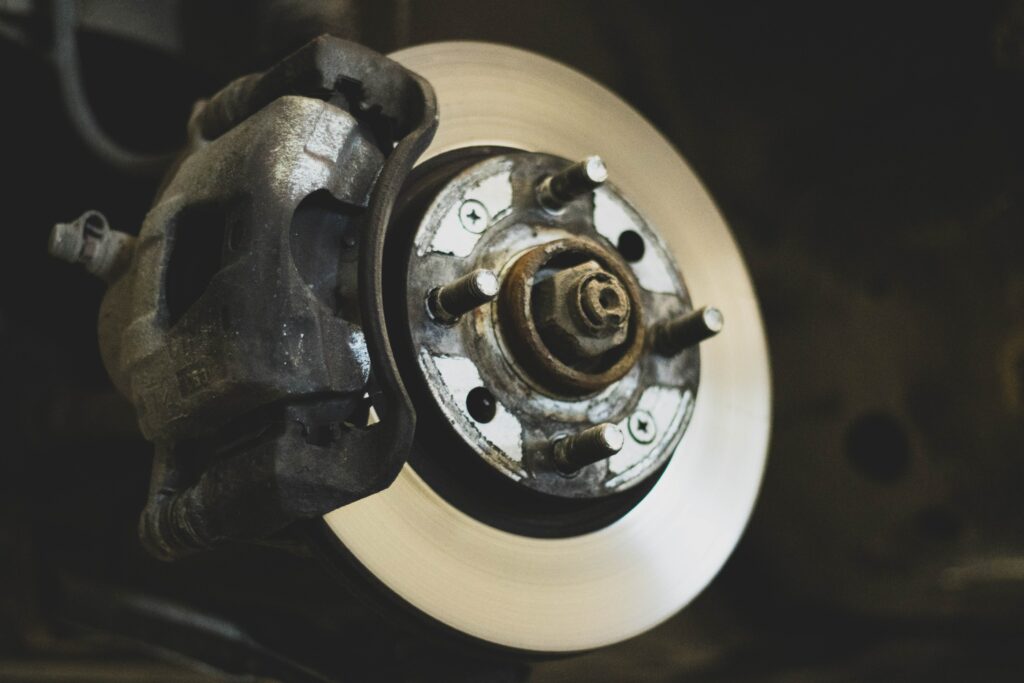
The development of lipped discs is a natural outcome of the wear and tear that braking systems undergo over time. As a vehicle is driven, the brake pads exert pressure against the brake rotors to generate the necessary friction for stopping. This friction leads to a gradual removal of material from the surface of the rotors, creating a slight unevenness. This unevenness gives rise to what is known as a “lip,” or a ridge along the outer edge of the rotor.
Lipped discs are particularly common in vehicles equipped with disc brakes, which are prevalent in modern automotive designs. The very design of disc brakes, while efficient in braking performance, contributes to forming these lips due to how the brake pads come into contact with the rotating rotors. Understanding the origins of lipped discs is key to appreciating the importance of managing and maintaining them to ensure optimal braking functionality.
Causes of Lipped Discs
The formation of lipped discs within car braking systems can be attributed to several contributing factors, each playing a role in their development. Understanding these factors sheds light on the underlying causes of this phenomenon and underscores the need for proactive maintenance.
1. Repeated Braking and Heating/Cooling Cycles:
The regular usage of brakes during driving subjects them to a cycle of intense heat generation followed by cooling. This rapid transition from high temperatures to cooler conditions can lead to uneven wear on the brake rotors. As the rotors heat up during braking and cool down, the material can undergo slight expansions and contractions, creating uneven surfaces, or lips, on the rotor.
2. Aggressive Driving Habits:
Aggressive driving practices, such as abrupt and forceful braking, can accelerate the wear and tear on brake components. When drivers frequently apply brakes with excessive force, the friction between the brake pads and rotors intensifies, leading to faster removal of material from the rotor surface. This aggressive wear and tear can form pronounced lips on the edges of the brake discs.
3. Quality of Brake Pads and Rotor Materials:
The quality of the brake pads and rotor materials used in a vehicle significantly influences the rate of wear and the development of lipped discs. Inferior or low-quality brake components may not be durable enough to withstand the friction and heat generated during braking, leading to quicker material degradation and lips formation. On the other hand, high-quality brake pads and rotors designed to withstand the rigors of braking contribute to a more even wear pattern.
Signs of Lipped Discs
Detecting lipped discs in a car’s braking system is essential for optimal performance and safety. Several telltale signs can help drivers identify the presence of lipped discs and prompt them to take necessary action.
1. Noticeable Lips or Ridges on Brake Rotors:
One of the most apparent signs of lipped discs is the presence of lips or ridges along the outer edges of the brake rotors. These raised areas can often be felt by running a finger along the rotor’s surface. The unevenness directly results from the wear and tear caused by repeated braking cycles. These tips can hinder the smooth contact between the brake pads and rotors, affecting braking efficiency.
2. Vibration or Pulsation in the Brake Pedal During Braking:
When lipped discs are present, the uneven rotor surfaces can lead to uneven friction and pressure distribution during braking. This can result in a noticeable vibration or pulsation felt through the brake pedal while applying the brakes. This sensation is particularly prominent when coming to a stop and serves as a warning sign that the brake rotors might have developed lips.
3. Increased Brake Noise or Squealing:
Lipped discs can also contribute to changes in the auditory feedback during braking. Drivers might notice increased brake noise, including squealing or screeching sounds. The uneven contact between the brake pads and lipped rotor surfaces can lead to irregular friction, causing these distinct noises during braking maneuvers.
Impact on Braking Performance
Lipped discs within a car’s braking system can have a pronounced impact on braking efficiency and overall safety. Understanding these effects is essential for drivers to comprehend the urgency of addressing lipped discs and maintaining their vehicle’s braking system.
1. Uneven Contact Between Brake Pads and Rotors:
Lipped discs create an uneven surface on the brake rotors, which leads to inconsistent contact between the brake pads and the rotor’s surface. The brake pads might primarily engage with the raised lips rather than the entire rotor surface during braking. This uneven contact diminishes the friction required for efficient deceleration, leading to compromised braking performance.
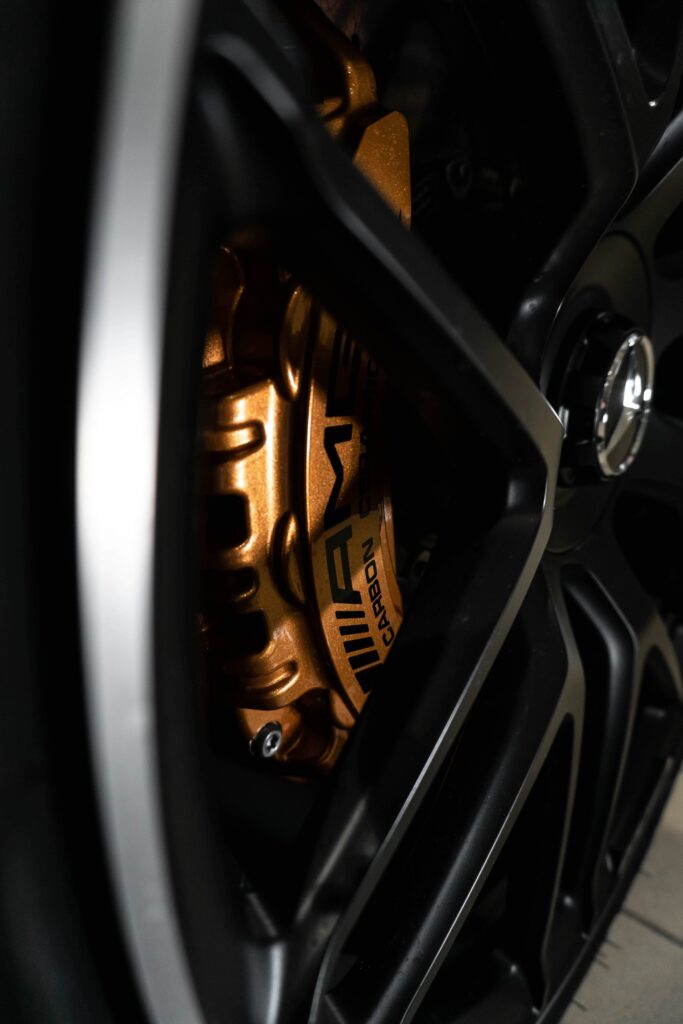
2. Reduced Surface Area for Effective Braking:
The formation of lips on the brake rotors reduces the available surface area for brake pads to make contact. Effective braking relies on maximizing friction between the pads and rotors. When lips are present, the usable contact area decreases, limiting the force that can be applied to slow down the vehicle. This reduction in friction can extend the braking distance and impede the ability to promptly bring the vehicle to a safe stop.
3. Potential for Brake Pad Glazing and Reduced Stopping Power:
Uneven contact caused by lipped discs can contribute to the phenomenon known as “brake pad glazing.” This occurs when the brake pads generate excessive heat due to irregular contact, causing the brake pad material to harden and become less effective in generating friction. Glazed brake pads have reduced stopping power, compromising the vehicle’s ability to respond quickly to sudden braking situations.
Preventing and Addressing Lipped Discs
To maintain optimal braking performance and extend the lifespan of a vehicle’s braking system, it’s essential to adopt preventive measures and know how to effectively address the issue of lipped discs.
Preventing Lipped Discs:
1. Regular Maintenance and Inspection of Brake Components:
Routinely inspecting brake components, including brake pads and rotors, allows for early detection of wear patterns and the formation of lips. Timely maintenance can help identify potential issues and address them before they escalate, ensuring the even wear of braking surfaces.
2. Gentle Braking Habits to Minimize Heat Buildup:
Avoid aggressive and frequent braking, which generates excessive heat and accelerates wear. Gradual and controlled braking reduces the strain on the braking system and minimizes the likelihood of developing pronounced lips on the rotors.
3. Using High-Quality Brake Pads and Rotors:
Invest in high-quality brake pads and rotors designed for durability and efficient heat dissipation. Quality components are more wear-resistant and can withstand braking demands without deteriorating quickly.
Addressing Lipped Discs:
1. Brake Rotor Resurfacing to Remove Lips:
If lipped discs are detected early, and the lips are not too severe, brake rotor resurfacing can be a viable solution. This process involves removing a thin layer of material from the rotor’s surface to eliminate the lips and restore even contact with the brake pads.
2. Replacement of Severely Lipped Rotors:
In cases where lipped discs have become significantly pronounced and resurfacing is insufficient, replacement might be necessary. Installing new brake rotors ensures a smooth and even braking surface, restoring optimal braking performance.
Maintenance Practices
Maintaining a vehicle’s braking system in optimal condition requires a commitment to consistent and thorough maintenance practices. By adhering to these routines, drivers can ensure that their brakes perform reliably and contribute to a safer driving experience.
Regular Visual Inspections:
Performing regular visual inspections of your vehicle’s braking components is a proactive approach to identifying potential issues before they escalate. Check the brake rotors for any visible lips or ridges along the edges. Look for signs of uneven wear and assess the general condition of the brake pads and rotors.
Monitoring Brake Pad Wear and Rotor Condition:
Keep a close eye on the wear of your brake pads and the condition of the brake rotors. Modern vehicles are often equipped with wear indicators on the brake pads that emit a squealing sound when the pads are nearing the end of their lifespan. Monitoring rotor conditions for uneven surfaces or pronounced lips can also help you catch problems early on.
Following Manufacturer-Recommended Service Intervals:
Manufacturers provide recommended service intervals in the owner’s manual. Adhering to these intervals ensures your vehicle’s braking system is inspected and maintained appropriately. Scheduled maintenance might involve brake pad replacements, rotor resurfacing, or overall system checks performed by professionals.
Addressing Issues Promptly:
If you notice any signs of lipped discs, such as vibrations during braking or unusual noises, don’t delay seeking professional assistance. Addressing issues promptly can prevent them from worsening and potentially compromising braking performance.
Consulting Professionals:
While visual inspections are helpful, it’s important to have your braking system inspected and maintained by qualified professionals regularly. They have the expertise and tools to accurately diagnose issues, recommend appropriate solutions, and perform necessary maintenance tasks.
Professional Assistance
When it comes to the health of your vehicle’s braking system, seeking professional help is not just advisable – it’s crucial. Trained technicians are pivotal in ensuring that your brakes operate optimally and that any issues, including lipped discs, are addressed effectively.
Accurate Diagnosis and Addressing of Lipped Discs:
Trained technicians have the expertise and experience to diagnose lipped discs’ presence and severity accurately. Their thorough knowledge of brake systems allows them to identify signs of uneven wear, lips, or other potential problems that might go unnoticed by an untrained eye. This precision in diagnosis ensures that the correct measures are taken to restore your braking system’s performance.
Proper Tools and Equipment for Safe Brake Maintenance:
Brake maintenance involves intricate procedures that require specialized tools and equipment. Trained professionals have the right instruments to perform brake rotor resurfacing, brake pad replacement, and overall system inspection. Proper tools and equipment ensure that maintenance is performed safely and effectively, reducing the risk of errors and maintaining the integrity of your vehicle’s braking system.

Preserving Vehicle Safety and Performance:
By entrusting your brake maintenance to trained technicians, you are safeguarding your safety and preserving your vehicle’s overall performance and longevity. Brakes are a critical safety component, and any compromise in their functionality can have serious consequences. Professional assistance helps ensure that your brakes remain reliable, responsive, and capable of delivering the performance you need when you need it most.
Conclusion
Lipped discs play a crucial role in car braking systems, impacting safety and performance. These ridges caused by wear can lead to uneven contact, reduced braking efficiency, and glazing of brake pads.
To prevent and address lipped discs, regular maintenance and inspections are vital. Following recommended service intervals, monitoring wear, and seeking professional help ensure a well-functioning braking system.
Maintaining a vigilant approach to braking system health is essential for road safety. By staying informed, attentive, and proactive, we can ensure safe journeys for ourselves and others.
Is it Cheaper to Change Your Own Oil in 2023?
Read More: Click Here


